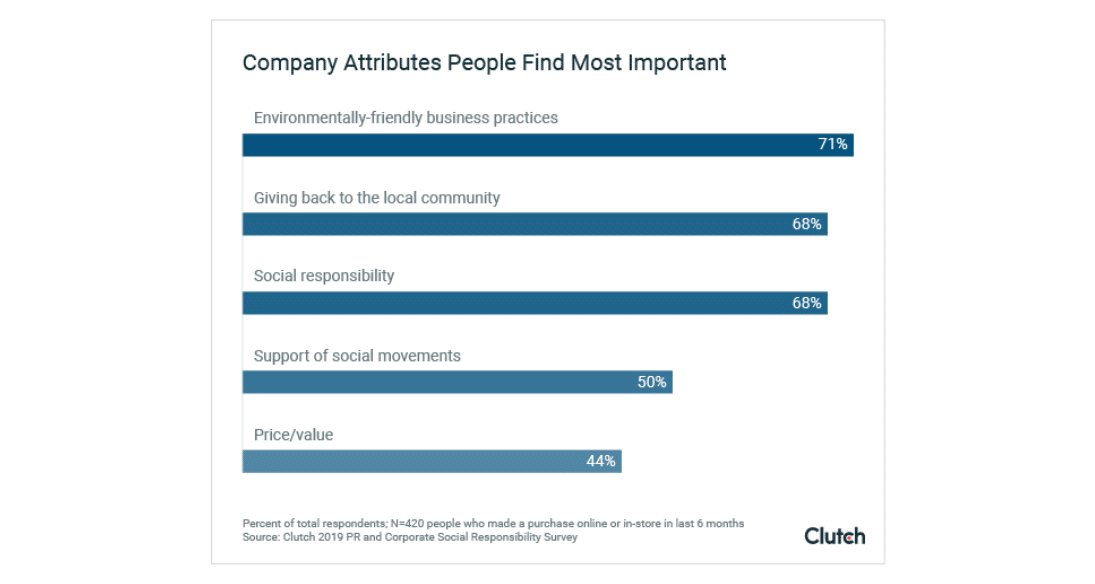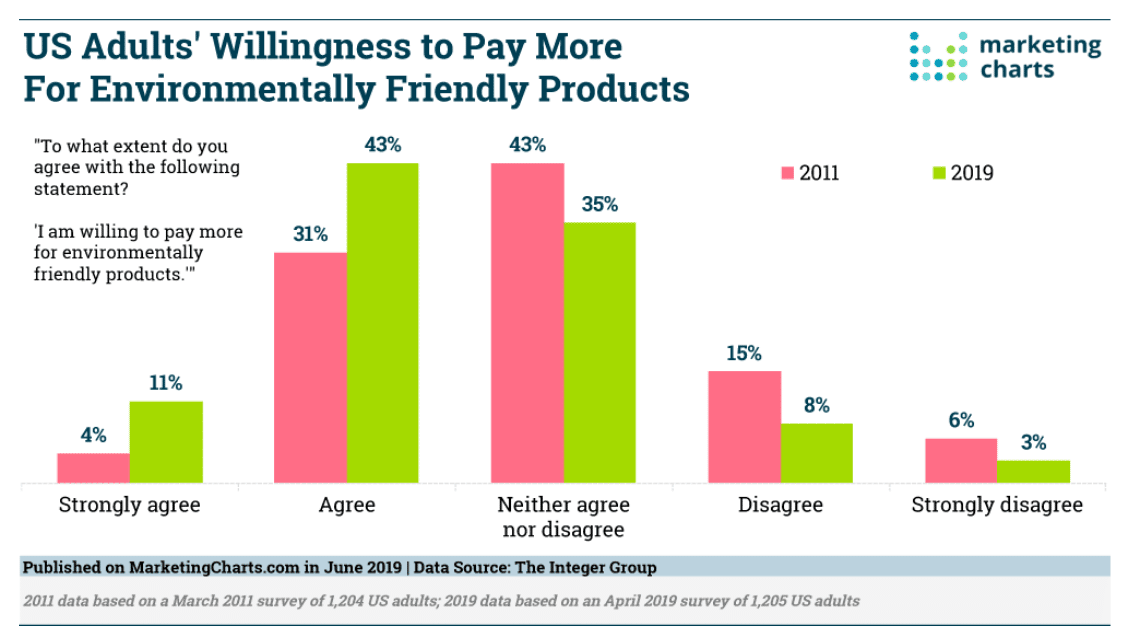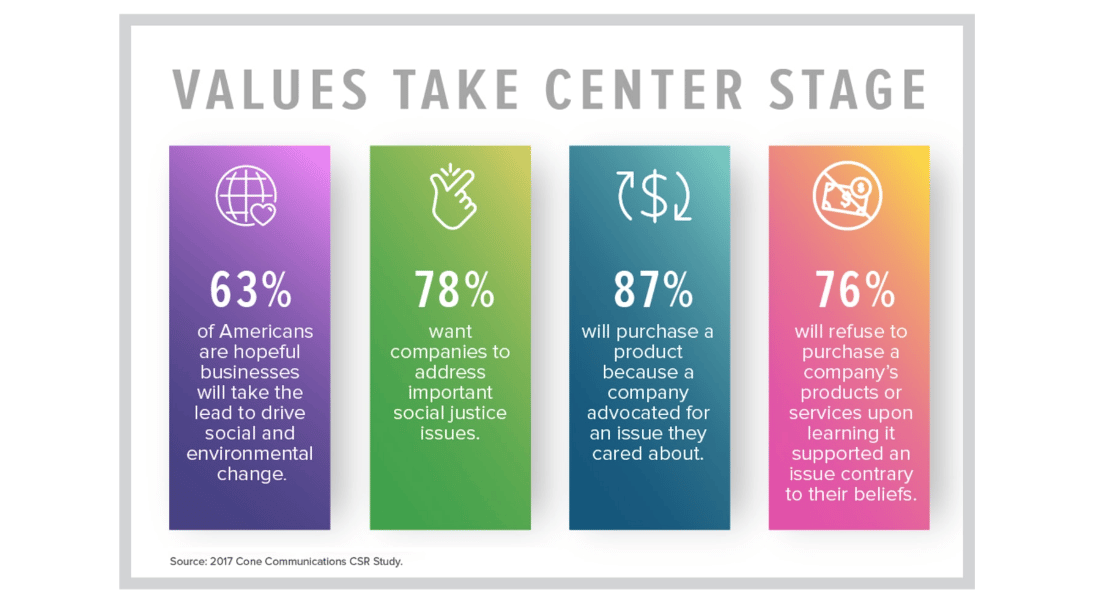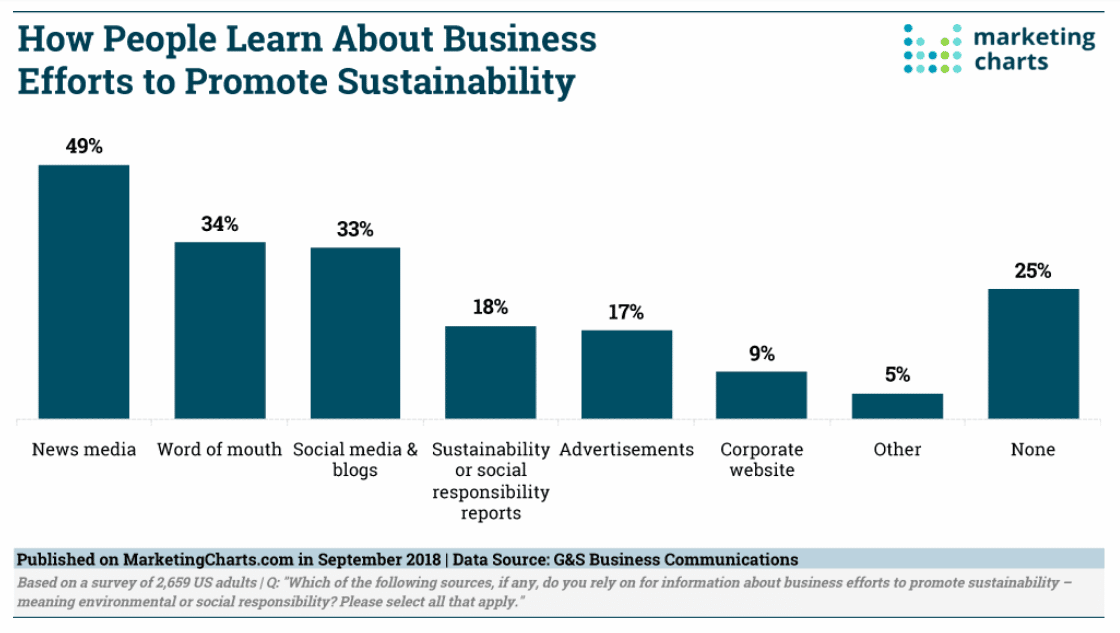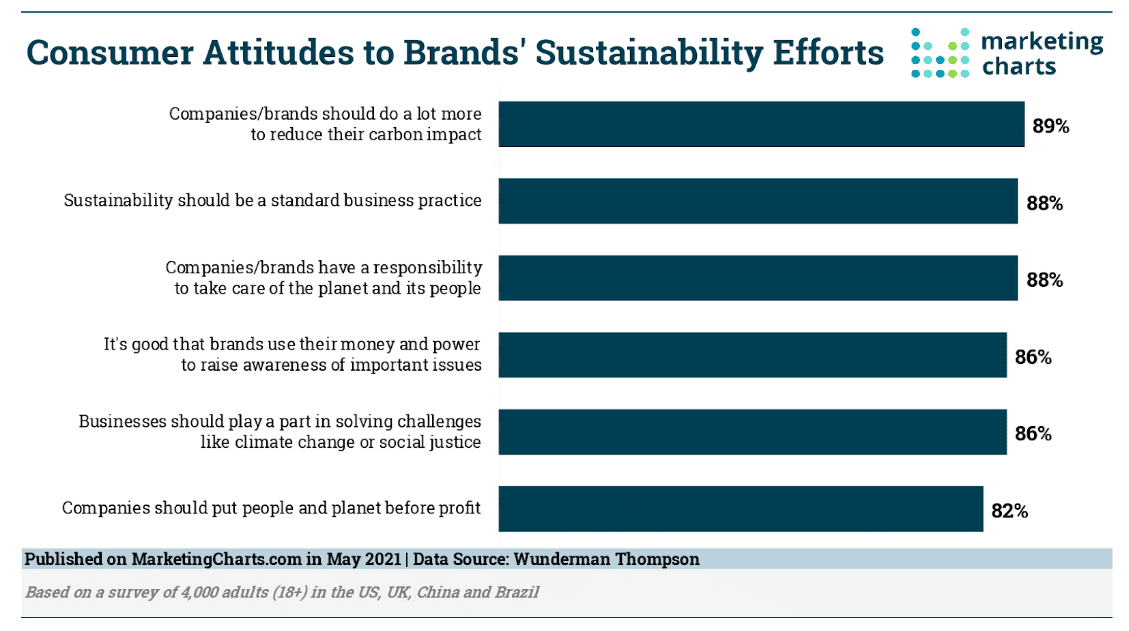Corporate social responsibility (CSR) is a major concern for small and large businesses alike. Many consumers expect businesses to strive for sustainable business practices such as reducing carbon emissions and promoting diversity and inclusion, and value these efforts above the cost of products in many cases.
Image sourced from clutch.co
The best way to show customers and stakeholders alike that your business is taking these matters seriously is with a CSR report. We’re going to look at some of the ways to draft a CSR report, what it should include, and the benefits of writing and publishing it for your business.
What is a CSR report?
A corporate social responsibility report is published by a company to share the actions they have taken towards social responsibility, and the results they have achieved. CSR reports synthesize and make public any information regarding any impact a company has had environmentally, socially, and governmentally.
CSR reports are published periodically, often annually, and are accessible by the investors, employees, clients, public officials, academics, and the general public.
These reports can be written in a variety of ways to suit the business. A range of templates are available online to provide a starting point from providers who also offer a range of other services, such as NDA templates.
Why are the benefits of CSR reporting?
CSR reporting can help organizations to achieve goals both internally and externally. By assessing the impacts they have on the environment, society, and the economy, organizations have the opportunity to improve their operations and potentially reduce operational costs.
The data gathered during the CSR reporting process can be used to highlight potential areas for cost reductions. For example, investigating energy consumption for a CSR report may highlight areas in which energy is being wasted. Tackling this problem will not only improve the environmental impacts of the business, but also reduce its costs.
Collecting data for a CSR report requires cross-departmental cooperation. This creates stronger communication channels through the business and encourages collaboration, both of which are factors that can help to boost employee retention.
Externally, collating and publishing a CSR report helps to strengthen communication channels between the business and its stakeholders. Not only does a CSR report keep stakeholders apprised of the short, medium, and long-term project decisions taken, but it can also encourage new investment from other parties.
For example, a CSR report that details positive steps being taken to reduce negative impacts on the environment will portray the business in a positive light, increasing public interest, and therefore, increasing the interest from potential investors.
Image sourced from marketingcharts.com
A survey found that 54 percent of customers overall were willing to pay more for environmentally friendly products. This means that highlighting the positive environmental impacts a business has worked towards can boost their reputation with the public and ultimately increase their profits.
What should be included in a CSR report?
CSR reports will vary from company to company; there is no set template for what they should include. However, just as all-purpose contract maker templates can be found online, so can CRS report templates.
When it comes to CSR reports, there are some common features that persist.
Features
- The sustainability context at the relevant market and industry levels.
- An impact assessment of the main negative impacts of the business.
- A description of the business’ main stakeholders and their main concerns surrounding sustainability.
- An overview of the progress made regarding sustainability over time, drawing data from key metrics and indicators.
- Examples and personal accounts of how the sustainability strategy of the business is positively affecting employees, stakeholders, and communities.
Environmental
A CSR report will include information relating to the environmental impacts and initiatives of the business. This will include an overview of the environmental policies of the company, and how progress is measured regarding these.
These policies will often cover key environmental concerns such as carbon emissions, recycling, wastewater, protecting wildlife habitats, and commitment to renewable energy.
Social
The social aspects of a CSR report will cover the commitments of the business to customers, clients, and the general public.
Any economic development relationships and partnerships will be outlined, including what benefits they have for the community and for the business. There will also likely be details of any charitable initiatives such as employee volunteering programs, fundraising, and philanthropy.
Information will also be included about the workforce planning strategy, covering inclusion, diversity, and equality. Employee satisfaction rates and employee safety figures will also be detailed.
Image sourced from shrm.org
How to write a good CSR report
Writing a CSR report will usually include these steps:
1. Identify issues
The first step when drafting a CSR report is to identify the key issues that your readers will want to know about. Undertaking competitor analysis can help to identify key issues that are of interest to the general public, but the best way to ascertain what your audience wants to read about is to ask them.
To this end, you can survey customers, stakeholders, employees, and partners to gather information about which issues they are most concerned with, thereby informing the key themes of your CSR report.
2. Set goals and metrics
Once you’ve identified the key issues that your report will cover, focus on what actions you will take to tackle them and how you will measure your success in doing so.
Set measurable targets and identify the key performance indicators that will be used to measure them. For example, you could set a target of reducing carbon emissions across the business by X%.
3. Make your report interesting
Now that you know the contents of your report, you can begin to write it. Images, testimonies, and other features can be used to better illustrate your points, helping to better present your findings and make them more relatable.
Taking a human approach to human issues is the best way to get your audience to engage with the report. You can celebrate the achievements of specific employees or departments in achieving their targets, and let people see the real-world impacts of your sustainability efforts.
4. Publicize your report
Once you’ve published your report, you want to publicize it as best as possible to ensure that your target audience gets a chance to read it. Even if readers only skim the report, it’s worthwhile making them aware that your business is one which prioritizes sustainability initiatives.
Image sourced from marketingcharts.com
5. Start a dialogue
Using your CSR report as a way to start a conversation with your target audience is a great way to boost engagement with your brand and will help you to refine and achieve your CSR goals.
Ask for feedback from your readers about your progress, where they feel you’ve made significant achievements, and what areas could use improvement.
Standardized vs. personalized CSR reports
Standardized CSR reports will often focus on the extent to which a company complies with various environmental initiatives, and which certifications they have achieved. For example, showing compliance with universally recognized initiatives such as the FTSE4GOOD Index or the Global Reporting Initiative (GRI) will demonstrate a measurable achievement in sustainability.
Reports that focus on these initiatives will often be data driven and potentially exhaustive, so may not be the best way to communicate sustainability achievements to the general public. Often, a more personalized CSR report is the best way to show off the highlights of a company’s sustainability efforts in a more engaging way.
Templates are available for this kind of report, as they are for many varied business documents, such as the PandaDoc release of liability template.
However, critics may see a personalized report as an attempt to cover up facts and figures, or as a way to avoid talking about specific global issues that may be missing from the report. For this reason, many companies choose to publish both types of report, allowing them to speak to multiple potential audiences and back up their achievements with certifiable data.
How to measure the impact of your CSR
Measuring the impact of CSR initiatives is important for several reasons. Not only does it allow businesses to make data-driven conclusions about their impacts to sustainability, it also informs future decision-making about CSR programs, such as setting new targets.
A business can measure itself against industry benchmarks, illustrating how well they’re doing compared to their competitors. Certifications or recognition from awarding bodies can also indicate when targets have been met and are an instantly recognizable way to highlight this for consumers and stakeholders.
Finally, tracking and publishing key performance indicators (KPIs), particularly on environmental impacts, can illustrate the immediate impacts of initiatives. Keep in mind that the biggest long-term benefits to sustainability initiatives can be the improvements to a company’s reputation in the eyes of the public.
Image sourced from marketingcharts.com
Over 80 percent of consumers surveyed said it was important that companies engage in sustainability efforts, such as reducing their carbon footprint and raising awareness of key issues such as social injustice. Publicizing the fact that your company is conscious of these issues is a great way to create a positive brand image.
Corporate social responsibility reporting: It’s a win-win
Whether it’s taking steps to protect the environment or working to promote equality within your organization and society at large, a CSR report is the best way to show the world that you’re taking social responsibility seriously.
CSR reports help to foster positive relationships between a business, its customers, and its stakeholders. When crafting a CSR report, focus on your target audience and write it with them in mind. Make it unique to your business with personal stories from your employees, and really show off the positive impacts your business has had in people’s lives.
Use the data you gather to inform future decisions around sustainability, and ensure that you build on your successes into the future. It’ll be worth the time and effort in the long-term.


